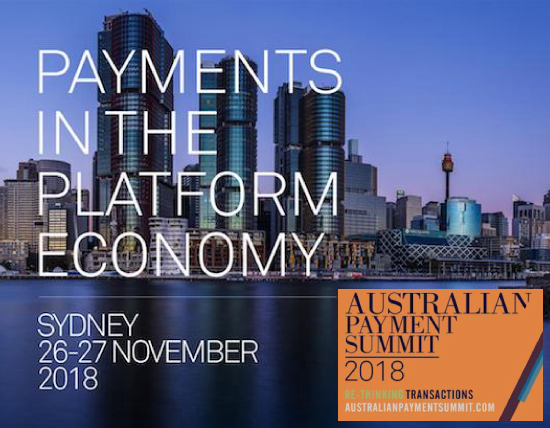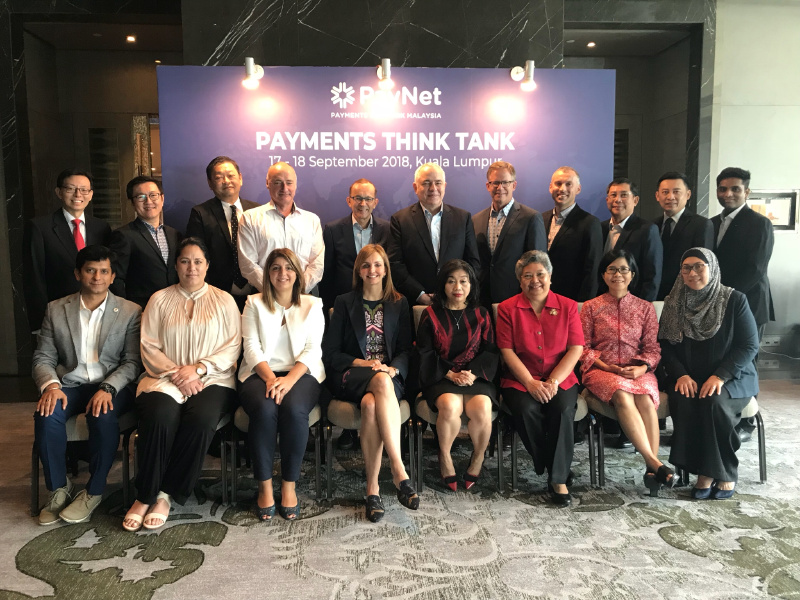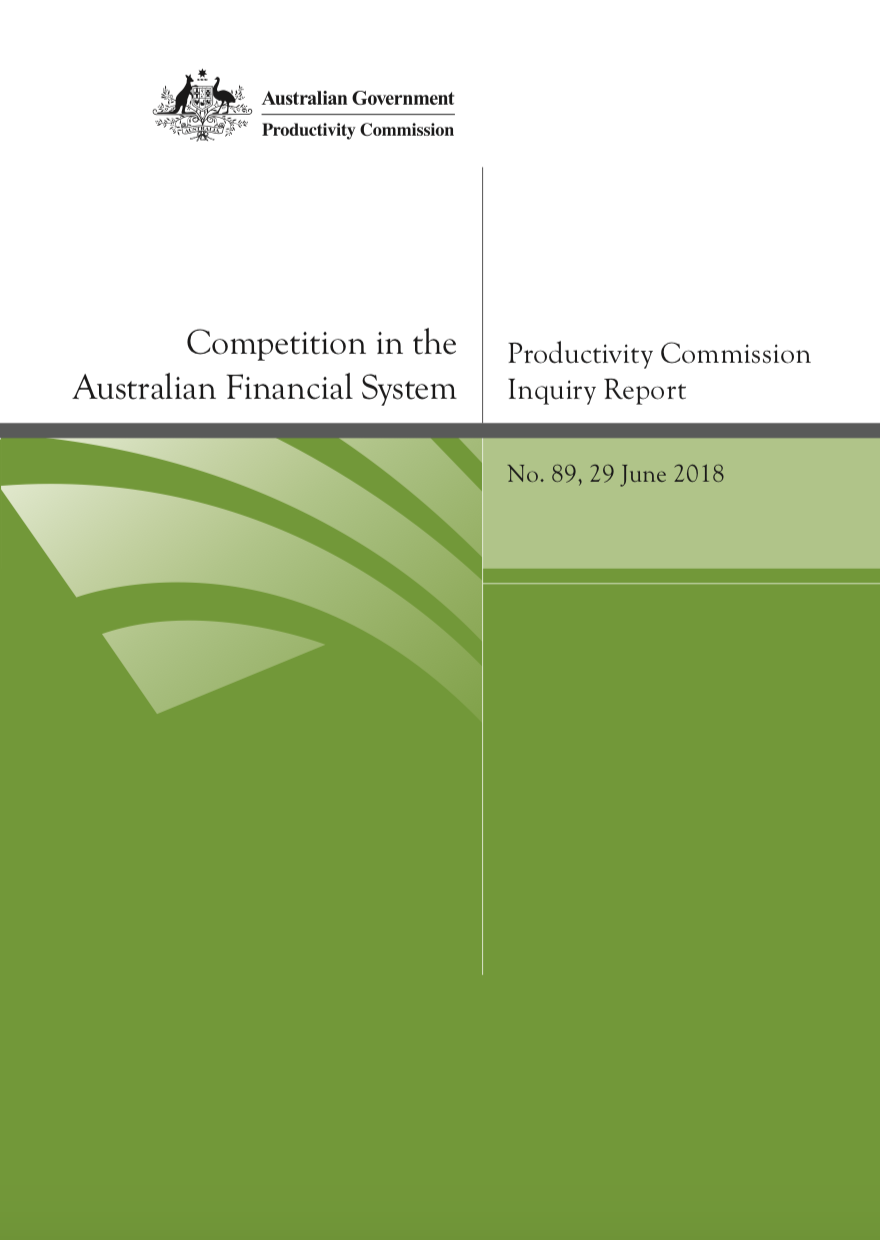CEO

"The shift to platform business models is an important economic force in the emerging digital economy."
The shift to platform business models is an important economic force in the emerging digital economy. In 2015, the top 15 public platform companies represented $US2.56 trillion in market capitalisation. Today the largest platform company, Apple, is worth over $US1 trillion alone.
Cambridge dictionary defines a platform as a “raised structure where people get on and off trains”. The business sense of the word is not too far removed. A multi-sided platform enables the direct interaction between two or more distinct sides, with each side affiliating themselves with the platform in some way, for example uploading a YouTube video or buying a gaming console. Like a train platform, once a customer is on, they can use it to gain access to services and connections beyond what one’s platform provider (or train station) offers.
Drivers of platform business models
Platforms in the business sense are not a new idea; even shopping malls can be considered platforms that allow one side (shoppers) to interact with the other side (merchants). It’s the digitisation of resources that have allowed the relentless growth of platforms, as a platform’s network effects are no longer constrained by the ability to employ physical capital.
Cambridge’s platform definition, clearly limited in its interpretation, is driven by a single technology, whereas, three technologies drive our new platform economy: Cloud, Social, Mobile. All three are increasingly relevant in financial services.
The sheer speed of value creation is possible because platforms invert the firm, allowing the value to be derived from a community, rather than internally. It’s how Apple was able to provide its customers access to over 1 million new apps between 2014 and 2017 and expand into new segments of consumers’ lives. This is far beyond what would be possible if building apps were restricted to Apple employees.
Fitting in with financial services
The platform model is perhaps most entrenched in the Chinese payments system. The exponential growth of Alipay and WeChat Pay and their integrated nature are archetypal of successful platform strategies. Outside of China we also see examples of platform models beginning to be utilised in many ways across financial services.
Technology networks are transforming the way markets develop and Australia’s payments system is no different. There is a paradigm shift underway in payments processing and business models toward platforms, as payments move from a single-sided system (bank to customer) to a multi-sided system (provider to provider with the customer at the centre). The Federal Government’s mandating of an Open Banking regime and the emergence of digital-only (neo) banks are just two of the forces that will fuel the shift.
Will platforms become a dominant feature in the Australian financial services industry?
According to Platform experts Parker, Van Alstyne, and Choudary “Practically any industry in which information is an important ingredient is a candidate for the platform revolution”, and financial services are all about information. The World Economic Forum takes this further, arguing that “Platforms that offer the ability to engage with different financial institutions from a single channel will become the dominant model for the delivery of financial services”. However, the final form that the economics of these future business models will take is far less certain.
Data and digitisation are shaping a new era of payments super-platforms. Today, the impetus in payments is toward open, digital distribution and the global trends underpinning this shift are now playing out in Australia.
Looking ahead, we will be holding our Australian Payment Summit, on 26-27 November 2018. Themed "Payments in the Platform Economy", our program builds on the payments super-platform concept to explore the implications of open data, AI, quantum computing and other payments innovations. I hope you can join us and look forward to engaging with you on these topics.
We are also excited about our upcoming whitepaper "Towards an Internet of Payments – Global communities redefining the payments landscape", developed with A.T. Kearney, which considers the implications of the emergence of global networks for the payments industry.
AusPayNet Events

Scroll down to continue
Australian Payment Summit
Our 2018 Australian Payment Summit, themed 'Payments in the Platform Economy', will be held at the Hyatt Regency Sydney on 26-27 November 2018.
 This year’s theme highlights the shift to super platforms as businesses and consumers embrace the digital world. Key topics on the agenda include open banking, AI, fintech innovation, blockchain, neo-banks, cross-border payments, digital ID and more.
This year’s theme highlights the shift to super platforms as businesses and consumers embrace the digital world. Key topics on the agenda include open banking, AI, fintech innovation, blockchain, neo-banks, cross-border payments, digital ID and more.
We are delighted with the exceptional line-up of local and international speakers joining our opening keynote, Dr Philip Lowe, Governor of the Reserve Bank of Australia (RBA), for our two-day event. Most recently, we have confirmed the panel for our Regulatory session on Day 2 including senior representatives from the Australian Prudential Regulation Authority, the Productivity Commission, and the RBA.
Full details of the program are available on the Australian Payment Summit website. We hope you can join us. Substantial discounts apply for AusPayNet members. Please get in touch for the member discount code.
If you would like to know more about why you should attend our flagship industry event, access our recent blog post here.
Consumer Data Right
Open data is gaining real momentum in Australia with the formation of the Data Standards Body (DSB) and the phased implementation of open data by 1 July 2019.
As Scott Morrison said recently, “The consumer data right effectively gives back to consumers a power that they have never had before – control and ownership over data, which in today's economy, is one of the most valuable things there is.”
Our COO, Andy White is on the Advisory Committee of the Data Standards Body, and our Standards Analyst, Arthur van der Merwe is actively involved in one its Information Security Working Group.
In a recent blog post, we summarise the work to create the standards for the consumer data right. This follows the August release of the Data Standards Body’s operating model, which includes three working groups which will facilitate the creation of the Consumer Data Right Standards.
Given the importance of formulating an economy-wide right to data – marked for initial roll-out in the banking sector from July next year – it was a privilege and delight to host special guests David Beardmore of the Open Data Institute (ODI) UK, and Jamie Leach, of the ODI Australian Network.
In a session that offered our members valuable insights into the state-of-play of open banking in the UK, we were also treated to a broader overview of open banking initiatives around the world.
More details on the origins of the UK’s Open Banking Standard along with the common themes driving open banking progress around the world are available in our recent blog post.
Selected Articles See All >
Industry News


Scroll down to continue
CNP Fraud Mitigation Framework Consultation
We are coordinating an industry consultation on a new framework to accelerate the fight against online card fraud.
In July, we held a series of workshops in Sydney and Melbourne to discuss the key aspects of the industry framework to manage online card payment fraud.
The ensuing CNP Fraud Mitigation Framework represents a new approach from industry on tackling the criminal activity that is migrating to online payment channels. The framework is the product of collaboration among the entire range of stakeholders in online payments.
In August, we sought to engage the community further and solicit feedback on key aspects of this draft framework.
The consultation period has since ended, and we are collating responses.
An industry-wide approach, and plan for implementation – to be coordinated by AusPayNet – will be developed in consultation with industry stakeholders once the framework is finalised.
More details on our recent workshops and our role in developing the framework are available here.
CNP Card Fraud Continues to Rise
The CNP Fraud Mitigation Framework consultation coincided with our release of the Australian Payment Card Fraud 2018 report, covering data for January-December 2017.
The report highlights that consumers spent more than $748.1 billion on their cards in 2017, up 5% on the previous year. The latest data shows that card fraud grew in line with card spending, increasing by 5% to $561 million. This compares to a 16% increase in card fraud 2016 and 19% in 2015.
While the growth rate of card fraud is slowing, trends seen in recent years continue. Chip technology is providing strong protection for in-person card transactions, with counterfeit/skimming fraud dropping 48% in 2017 to the lowest value since 2006. As in-person fraud becomes harder, and more people are making payments online, criminal activity is migrating to card-not-present (CNP) channels. In 2017, CNP fraud grew by 14 %, and now accounts for 85% of all fraud on Australian cards, reflecting a global trend of growing online card fraud and cybercrime generally.
The Australian Payment Card Fraud 2018 report and the accompanying media release are available here.
Building New Relationships – P7
Having led the creation of a P7 Think Tank in 2017, we were delighted to come together with members for the second time, at a recent meeting in Malaysia.
In 2017, our CEO joined the CEOs from Payments NZ and Payments Canada in creating a network for collaboration in the Asia Pacific region. This culminated in the development of a Payments Think Tank - named P7 to denote the seven founding members. The inaugural meeting was hosted by AusPayNet in Sydney.
Now in its second year, the Think Tank has grown to 12 members. At the recent Malaysia meeting, members agreed to form working groups to focus on the development of standards for emerging technologies and the development of an international education program in payments.
The Think Tank provides an opportunity to develop relationships with payment organisations from across the region, where we can collaborate and engage with industry peers on common challenges facing the payments industry.
Membership Update
As the payments landscape rapidly changes, the number and range of organisations we bring together continue to expand.
Over the past few months, we’ve been delighted to welcome a diverse range of new members, including:
- Volt Bank as a member of our Bulk Electronic Clearing System (for direct entry payments).
- EFTEX as an Acquirer in our Issuers and Acquirers Community (IAC)
- Payment Express as an Acquirer in the IAC
- Rambus Global Inc. as an IAC Affiliate
Our current membership of 125-organisations includes participant members, operator members, COIN members and affiliates. We look forward to welcoming new members from across the payments spectrum in the shared purpose to improve the Australian payments system.
Security Roadmap
With payment cards now the dominant payment method in Australia, ensuring the extensive card network and infrastructure remain secure, is critical.
AusPayNet’s Technical Security Sub-Committee monitors best practice and is responsible for ongoing work to agree on industry security rules covered by the IAC Code Set.
The Sub Committee’s Security Roadmap, agreed by the Issuers and Acquirers Community (IAC) in October 2017, is currently under annual review. This roadmap sets out short, medium and long-term security enhancements for the card payments system in Australia. With close to a million POS and ATM terminals, and extremely complex back-end systems, the aim is to package together as many security enhancements as possible.
Under current consideration is whether, and if so when, the current network encryption algorithm, Triple DES should be upgraded to AES. Such an upgrade would be a major undertaking for industry involving all hardware and software in the card system.
The Security Roadmap also ensures that security standards referenced in AusPayNet’s security rules remain appropriate. As part of this work, we contribute significantly to national and international standards development through our major partners ISO, PCI and Standards Australia.
Next Generation Banknotes
On 18 October 2018, the Reserve Bank of Australia (RBA) released the new $50 banknote, the third denomination in the new series and the first to impact the ATM network.
We are supporting and coordinating industry’s efforts in ensuring cash machines can handle new banknotes when issued into circulation. This involves updating all machines that dispense, accept, count or sort banknotes.
The RBA is rolling-out the new series banknotes to ensure Australia’s currency remains among the most secure against counterfeiting. The new $50 banknote contains the same security features as the new $5 banknote released in September 2016, and $10 banknote in September 2017. Details of the features are available here.
Next up for release is the new $20 banknote, scheduled for late 2019. The $100 banknote denomination will follow in 2020.
Regulatory Round-up
Scroll down to continue
Competition in the Australian Financial System
The Final Report of the Productivity Commission (PC) Inquiry, Competition in the Australian Financial System (the Report) was released on 3 August 2018.
The Report examined the payments industry, concluding that there was competition both within and between payment methods and that consumer uptake of industry innovation is a major driver towards electronic payments.
The PC’s core recommendation was that the ACCC be designated as the competition champion for the financial services sector. Within payments, the PC made a number of recommendations relating to interchange fees, merchant choice for routing dual-network cards, a review of the regulatory framework for Purchased Payment Facilities (PPFs), an access regime for the NPP, a review of three-party schemes, greater transparency in fees relating to foreign transactions and updating and mandating the ePayments Code.
While the Government has yet to respond officially to the PC Report, a number of activities are already underway on many of these recommendations. The Payment System Board (PSB) at its August meeting, discussed the recommendations relating to interchange fees and routing of dual-network cards. The PSB noted that regulation of the card payments system was reviewed in 2015/16, and the impact of the new framework from that review is still being observed. The PSB agreed that it was “appropriate to undertake comprehensive reviews of the regulatory framework around every five years”. With respect to merchant choice in payment routing, the PSB ‘welcomed the Commission’s focus on the importance of holding down payment costs.
In September, the Council of Financial Regulators announced that it is conducting a review of the PPF framework, via its stored-value facilities (SVFs) consultation. The ACCC initiated an inquiry into foreign currency conversion services in October 2018.













